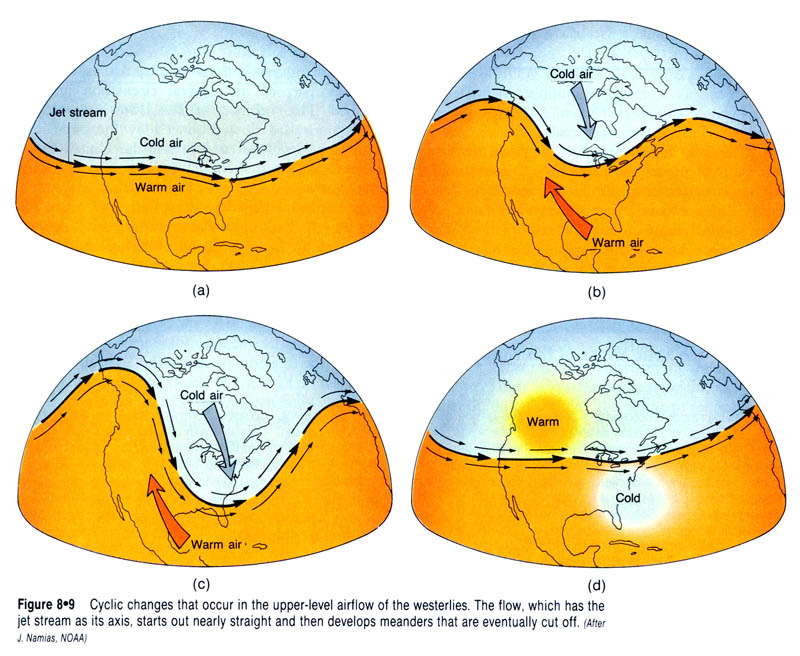Atmospheric Circulation
Atmospheric Circulation: To better understand how our atmosphere functions it helps to examine its major components and interactions. Of course understanding the finer points means understanding heat energy transfers processes from outside and within our atmosphere. That includes energy from the sun, and also how land and oceans transfer heat, which then affect how Earth’s atmospheric components behave within the Earth climate system.
There are only three major atmospheric cells that extend from the equator to the poles.
- Hadley cell
- Ferrel Cell
- Polar Cell
So if you look at the Earth from the equator you will see these three cells in each hemisphere, the northern and southern hemisphere. That means there are two of each cell, one in each hemisphere.
Add the rotation of Earth and some heat hitting the land and oceans and you have the major drivers of wind and weather. In other words, lots’ of up, down, and sideways motions that make up natural climate and weather variability.
But that’s not all of it. The Oceans are constantly overturning heat content on many different time scales from very short intra-annual scales to decadal and century scale. There is even a cycle that data shows can overturn the heat content between the southern and norther hemispheres in 1470 years called a D/O cycle. Other key factors to consider are Earth reflectivity of how surface elements reflect and absorb heat.
How the heat is exchanged between these systems, how Earth’s rotation affects atmospheric cells, and ultimately the underlying physics.
Needless to say, Earth receives nearly all its climate system heat energy from the sun. Only a tiny fraction comes from Earth’s inner molten core.
Idealized view of Atmospheric Circulation
Source: https://www.srh.noaa.gov/jetstream/
Rossby Waves
Source: https://www2.pvc.maricopa.edu/ssd/geog/outlines/GPH212/chap12.html
Source: https://www.geog.ucsb.edu/~joel/g110_w08/lecture_notes/midlat_upper/midlat_upper.html




